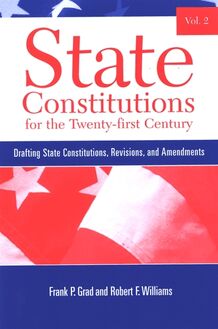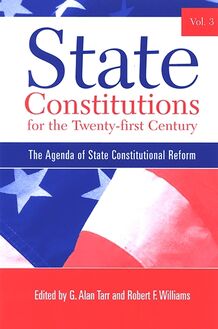State Constitutions for the Twenty-first Century, Volume 3 , livre ebook
382
pages
English
Ebooks
2012
Obtenez un accès à la bibliothèque pour le consulter en ligne En savoir plus
Découvre YouScribe en t'inscrivant gratuitement
Découvre YouScribe en t'inscrivant gratuitement
382
pages
English
Ebooks
2012
Obtenez un accès à la bibliothèque pour le consulter en ligne En savoir plus
Publié par
Date de parution
01 février 2012
Nombre de lectures
2
EAN13
9780791481981
Langue
English
Poids de l'ouvrage
1 Mo
Introduction
G. Alan Tarr
1. Rights
Robert F. Williams
2. The Legislative Branch
Michael E. Libonati
3. The Executive Branch
Thad Beyle
4. The Judicial Branch
G. Alan Tarr
5. Local Government
Michael E. Libonati
6. Voting and Elections
James A. Gardner
7. Constitutional Amendment and Revision
Gerald Benjamin
8. State and Local Finance
Richard Briffault
9. Education
Paul Tractenberg
10. The Environment and Natural Resources
Barton H. Thompson, Jr.
Bibliography
Contributors
Index
Publié par
Date de parution
01 février 2012
Nombre de lectures
2
EAN13
9780791481981
Langue
English
Poids de l'ouvrage
1 Mo


